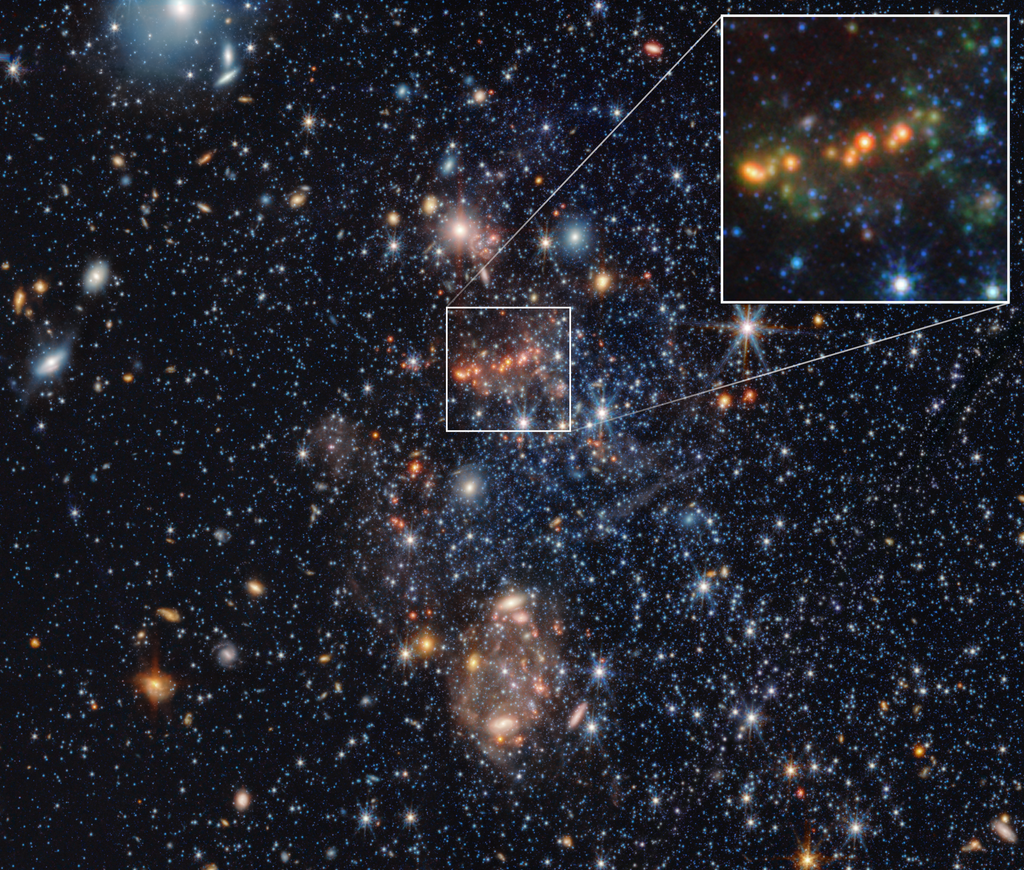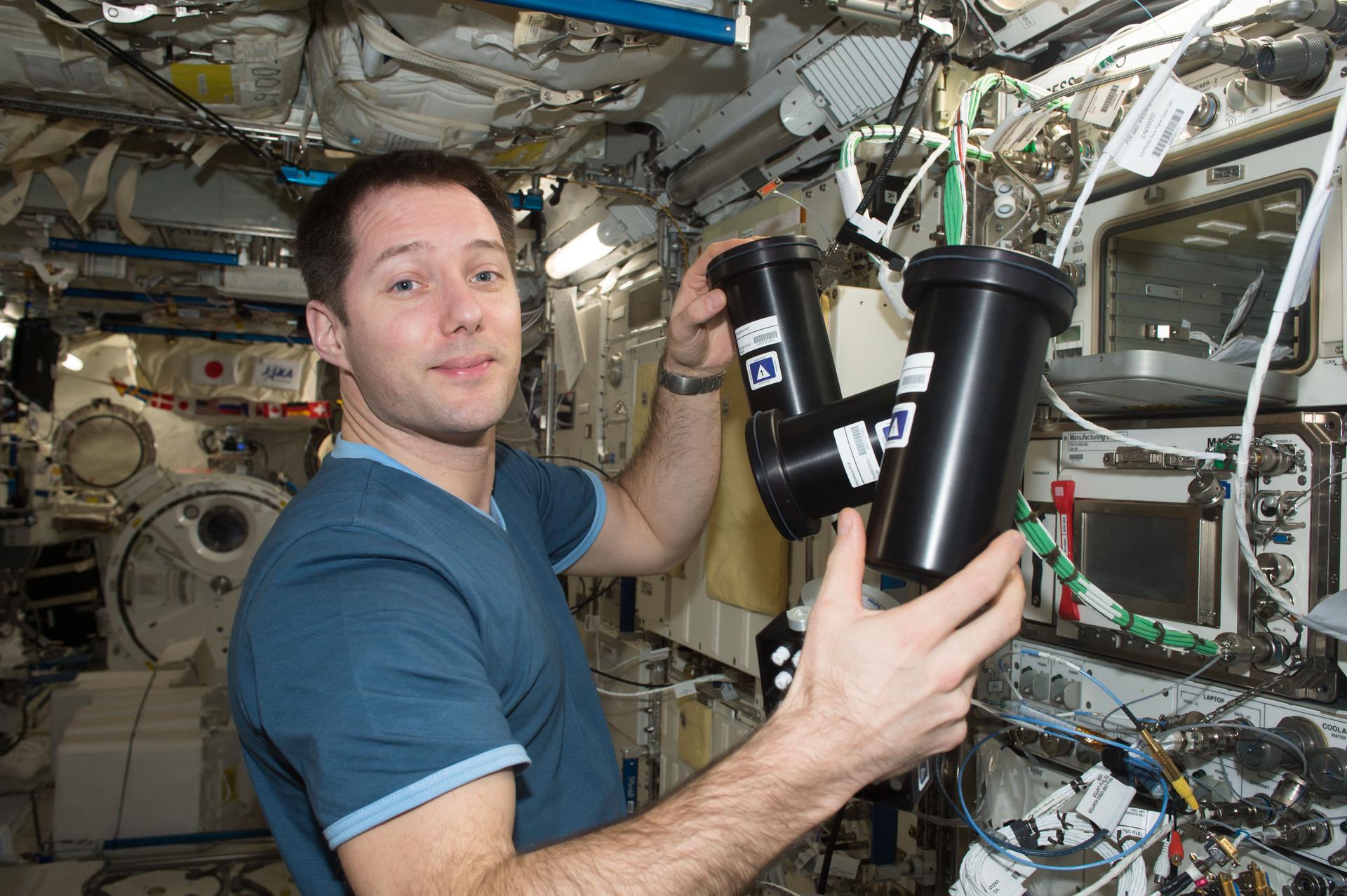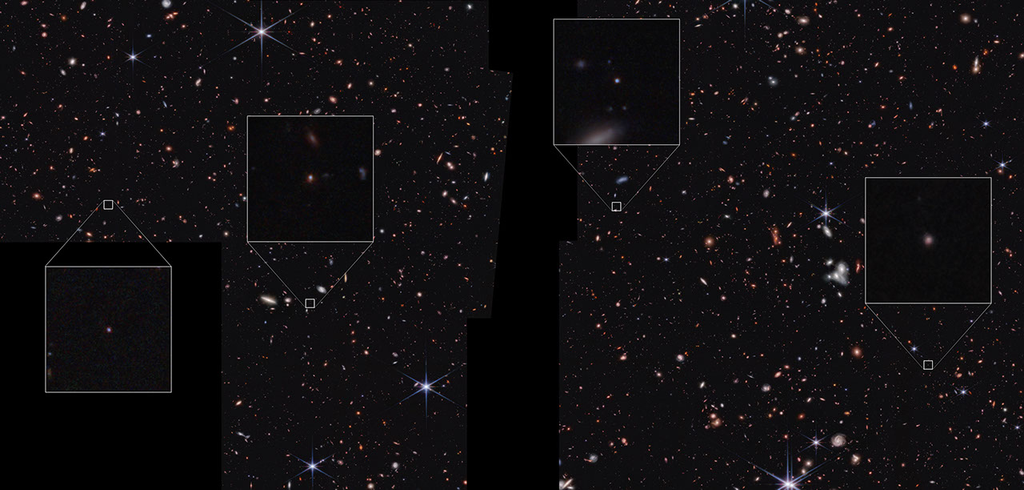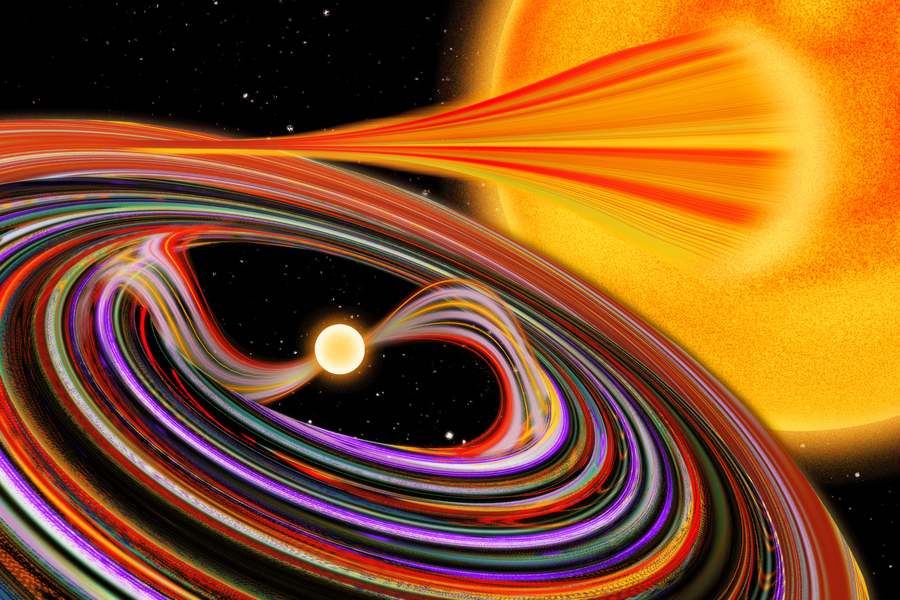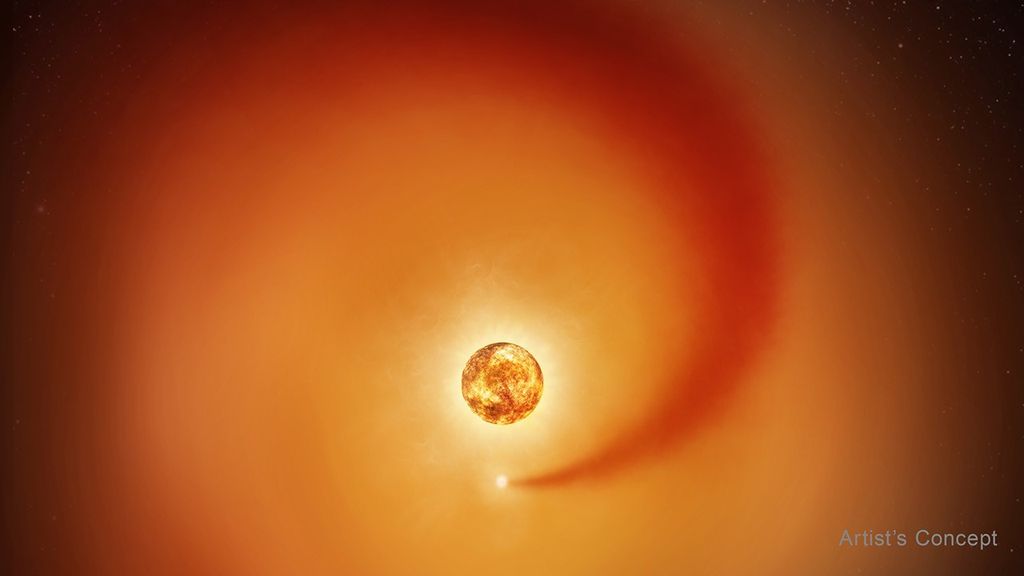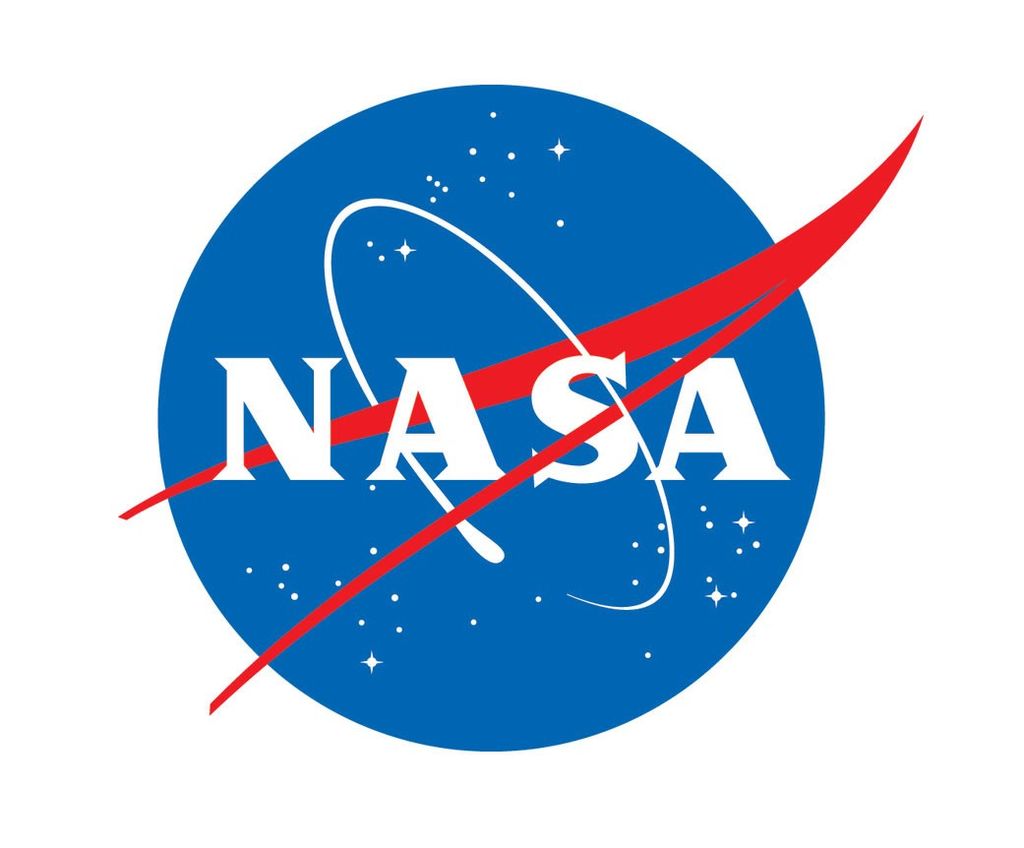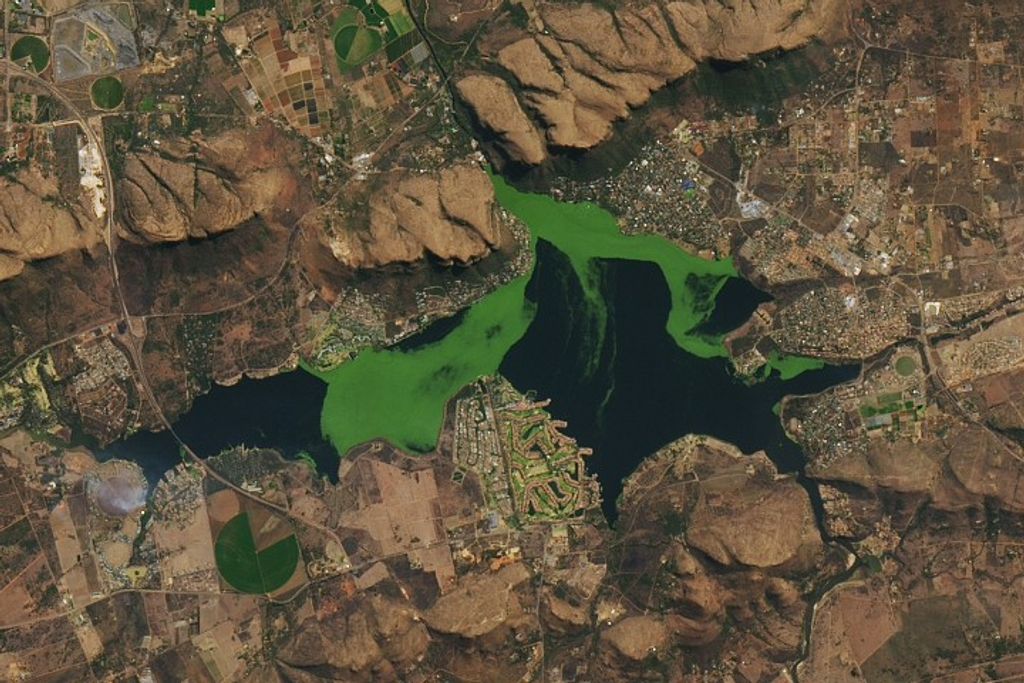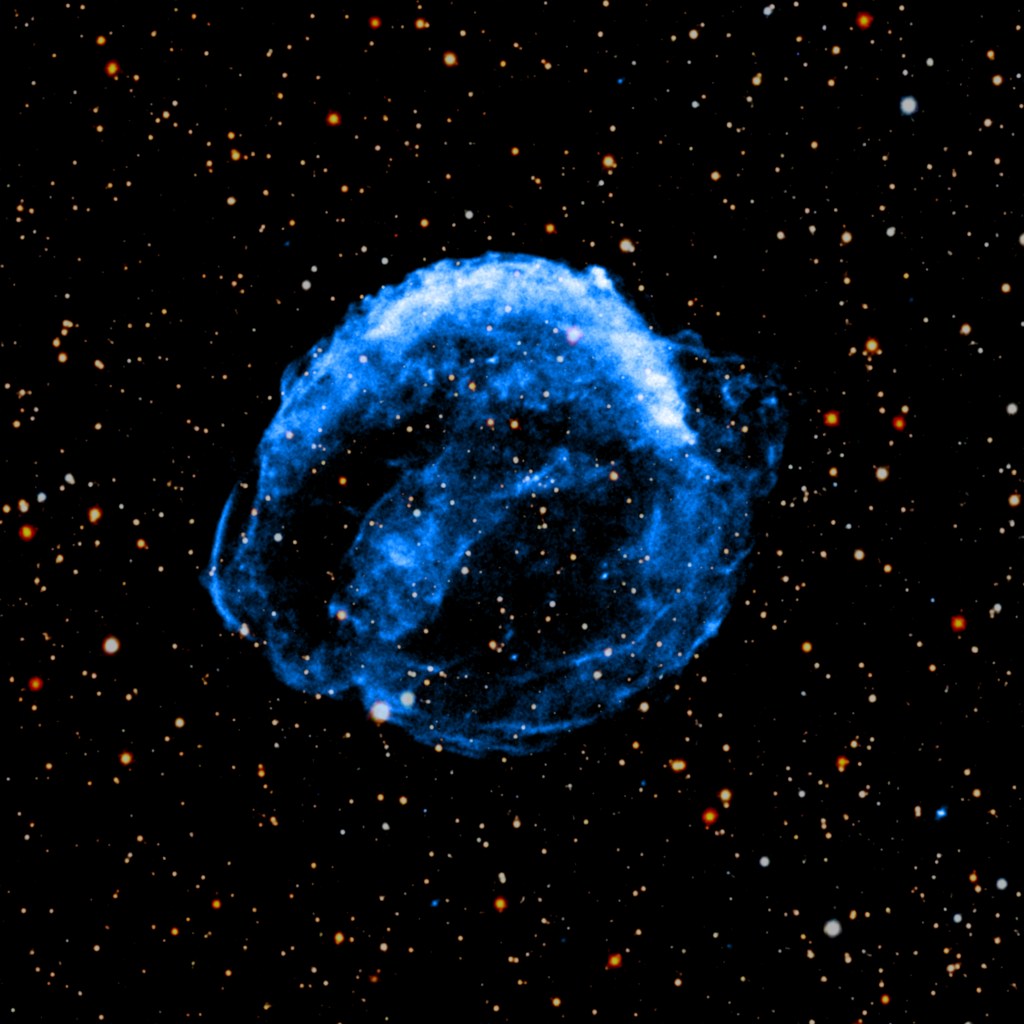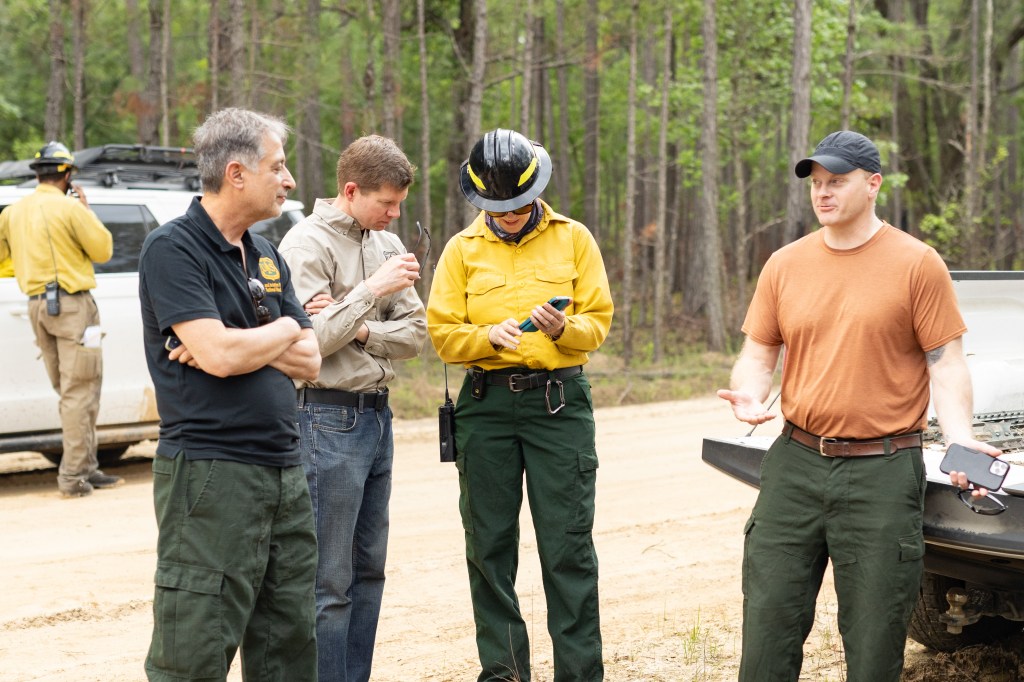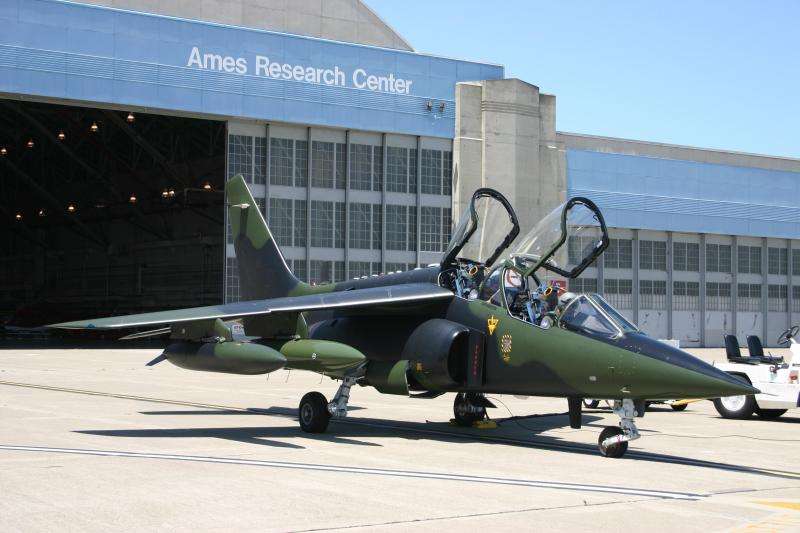1 min read
Hubble Sees Distant Supernova Multiply Imaged by Foreground Galaxy Cluster
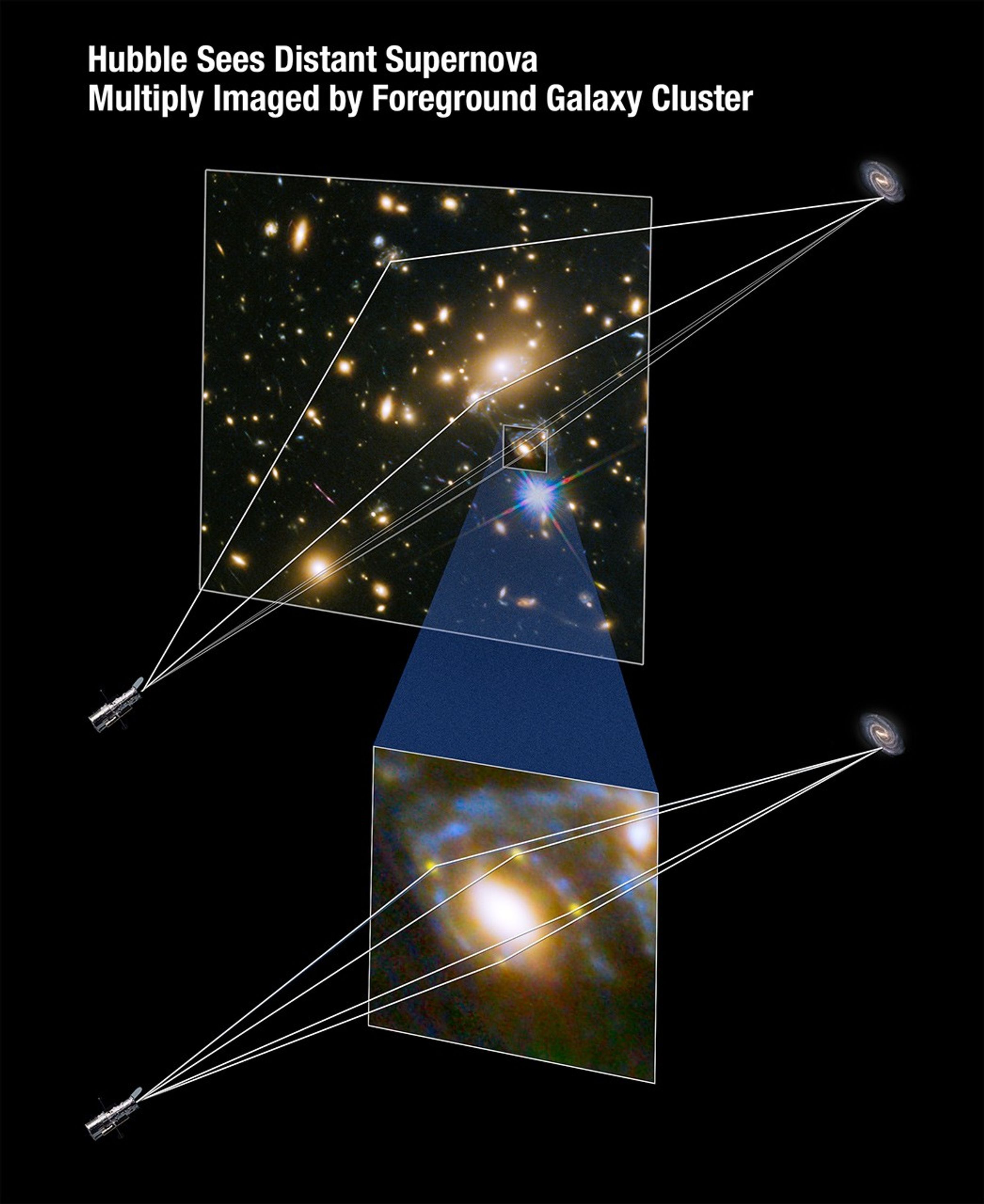
These illustrations show how the powerful gravity of a massive galaxy cluster bends and focuses the light from a supernova behind it, resulting in multiple images of the exploding star. This phenomenon is called gravitational lensing, and astronomers use it to search for distant objects that might otherwise be too faint to see, even with today's powerful telescopes.
The upper graphic shows that when the star explodes, its light travels through space and encounters the foreground galaxy cluster. If the cluster were not present, astronomers would detect only the supernova light that is directed straight at Earth and would see only a single image of the supernova. In the case of the multiply imaged supernova, however, the light paths are bent by the cluster's gravity and redirected onto new paths, several of which are pointed at Earth. Astronomers, therefore, see multiple images of the exploding star, each one corresponding to one of those altered light paths. Each image takes a different route through the cluster and arrives at a different time, due, in part, to differences in the length of the pathways the light follows to reach Earth.
In the lower graphic, the redirected light passes through a giant elliptical galaxy within the cluster. This galaxy adds another layer of lensing, once again redirecting several light paths that would otherwise have missed us, and focusing them so that they do reach Earth. This phenomenon produces four images of the supernova that form a cross-shaped pattern called an Einstein Cross.
About the Data
- Data DescriptionData DescriptionProposal: A description of the observations, their scientific justification, and the links to the data available in the science archive.
Science Team: The astronomers who planned the observations and analyzed the data. "PI" refers to the Principal Investigator.This image is created from data from the following HST proposals: 13459 T. Treu (UCLA) et al. and the GLASS team, 13504 J. Lotz (STScI) et al. and the Frontier Fields team, 13790 S. Rodney (JHU) et al. and the FrontierSN team, and 14041 P. Kelly (UCLA) et al. and the Refsdal team. The science team includes: P. Kelly (UC Berkeley), S. Rodney (JHU), T. Treu (UCLA), R. Foley (University of Illinois at Urbana-Champaign), G. Brammer (STScI), K. Schmidt (UC Santa Barbara), A. Zitrin (Caltech), A. Sonnenfeld (UCLA), L.-G. Strolger (Western Kentucky University/STScI), O. Graur (New York University/American Museum of Natural History), A. Filippenko (UC Berkeley), S. Jha (Rutgers University), A. Riess (JHU/STScI), M. Bradac (UC Davis), B. Weiner (Steward Observatory/UA), D. Scolnic (University of Chicago), M. Malkan (UCLA), A. von der Linden (Dark Cosmology Centre, Copenhagen/KIPAC, Stanford), M. Trenti (University of Melbourne), J. Hjorth (Dark Cosmology Centre, Copenhagen), R. Gavazzi (Institut d'Astrophysique de Paris), A. Fontana (INAF-OAR), J. Merten (Caltech), C. McCully and T. Jones (UC Santa Barbara), M. Postman (STScI), A. Dressler (Carnegie Observatories), B. Patel (Rutgers University), S. B. Cenko (NASA/GSFC), M. Graham (UC Berkeley), and B. Tucker (UC Berkeley/Australia National University).
- Release DateMarch 5, 2015
- Science ReleaseHubble Sees Supernova Split into Four Images by Cosmic Lens
- Credit
Related Images & Videos
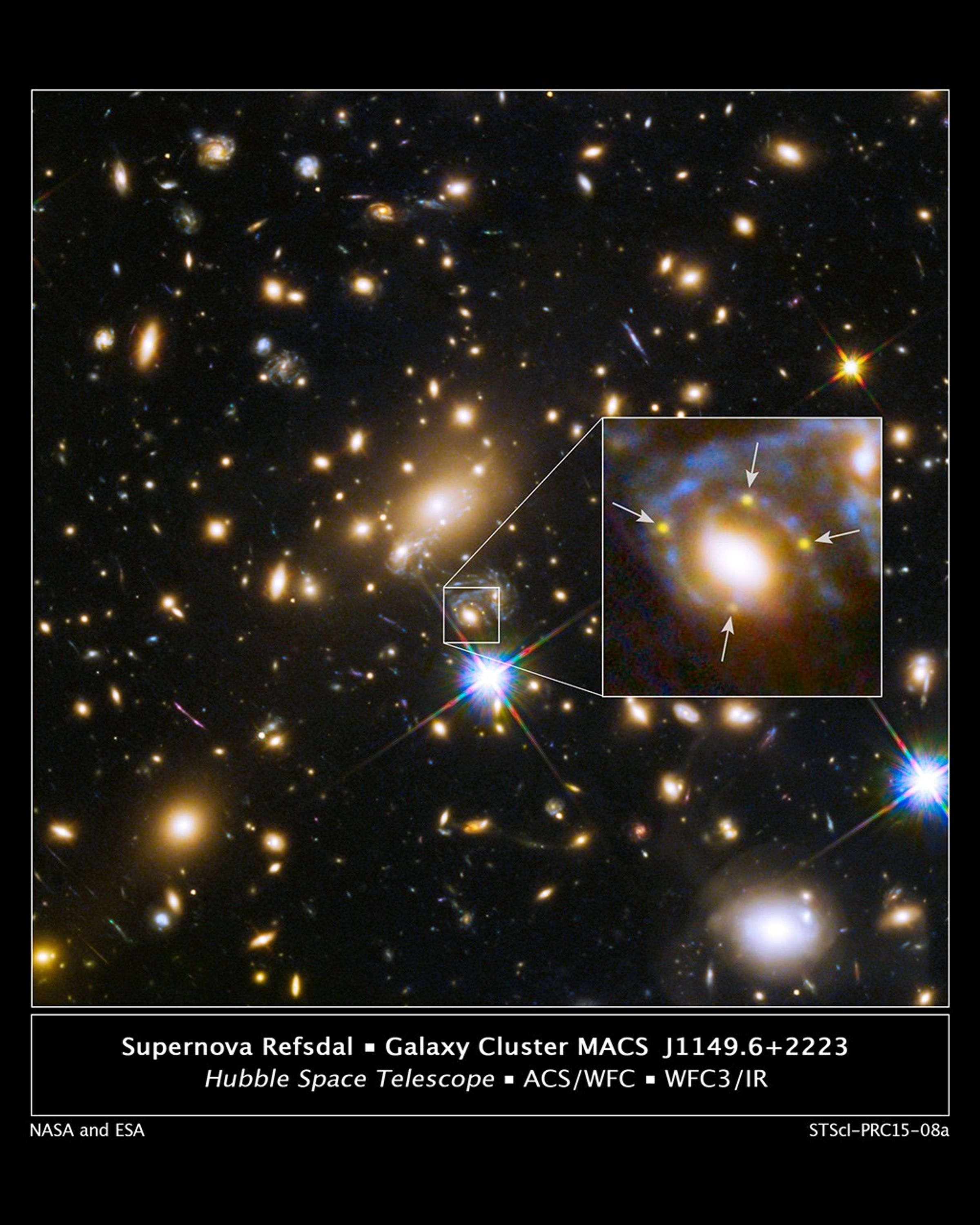
Supernova Refsdal and Galaxy Cluster MACS J1149.6+2223
The powerful gravity of a galaxy embedded in a massive cluster of galaxies in this Hubble Space Telescope image is producing multiple images of a single distant supernova far behind it. Both the galaxy and the galaxy cluster are acting like a giant cosmic lens, bending and...
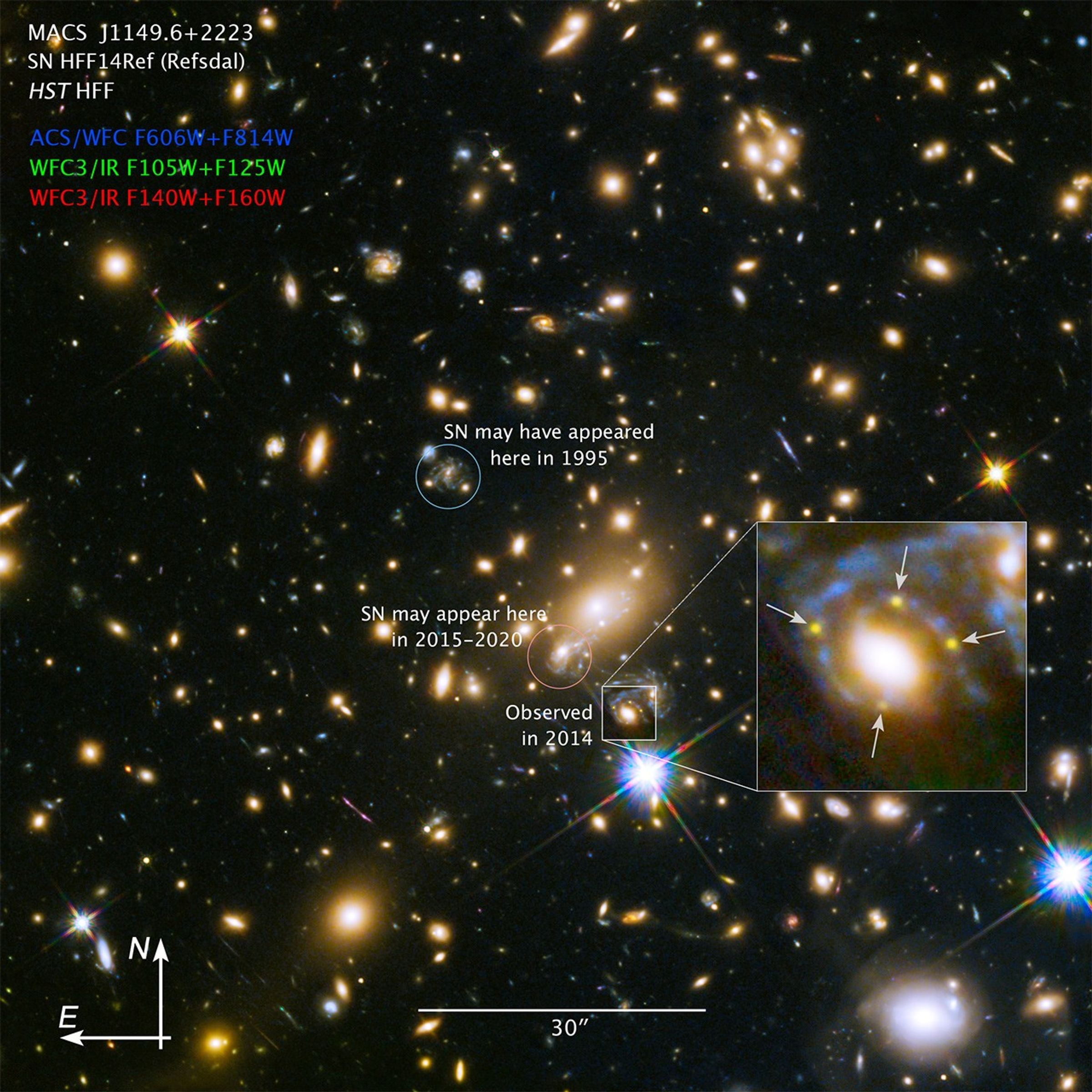
Compass and Scale Image for SN Refsdal and MACS J1149.6+2223
The powerful gravity of a massive cluster of galaxies in this Hubble Space Telescope image is producing multiple images of a single distant supernova behind it. The foreground cluster is acting like a giant cosmic lens, bending and magnifying light from the exploding star in an...
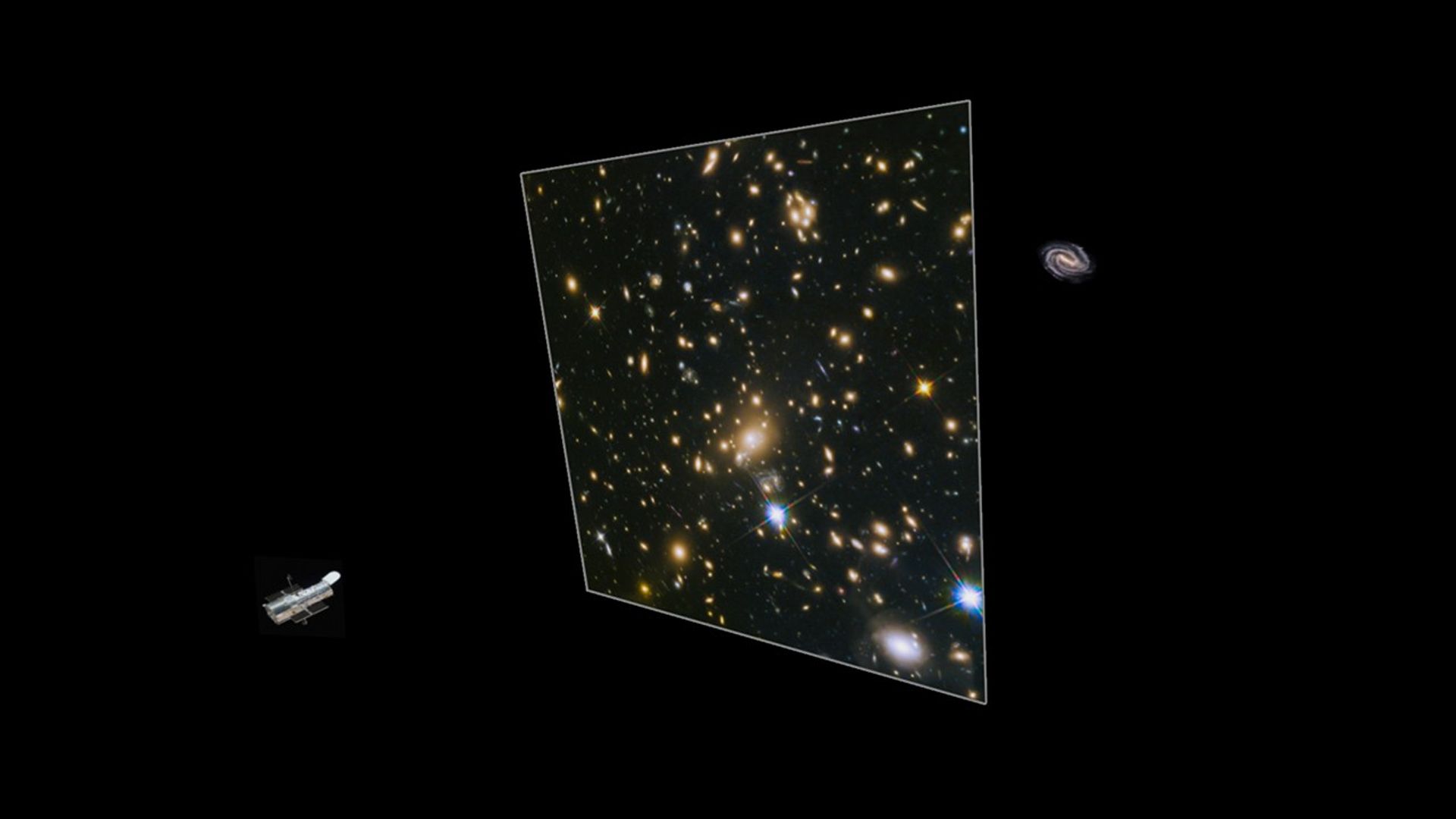
Supernova Multiply Imaged by Galaxy Cluster
This animation illustrates how the powerful gravity of a massive galaxy cluster bends and focuses the light from a supernova behind it, resulting in multiple images of the exploding star. If the cluster were not present, astronomers would detect only the supernova light that is...
Share
Details
Claire Andreoli
NASA’s Goddard Space Flight Center
Greenbelt, Maryland
claire.andreoli@nasa.gov

